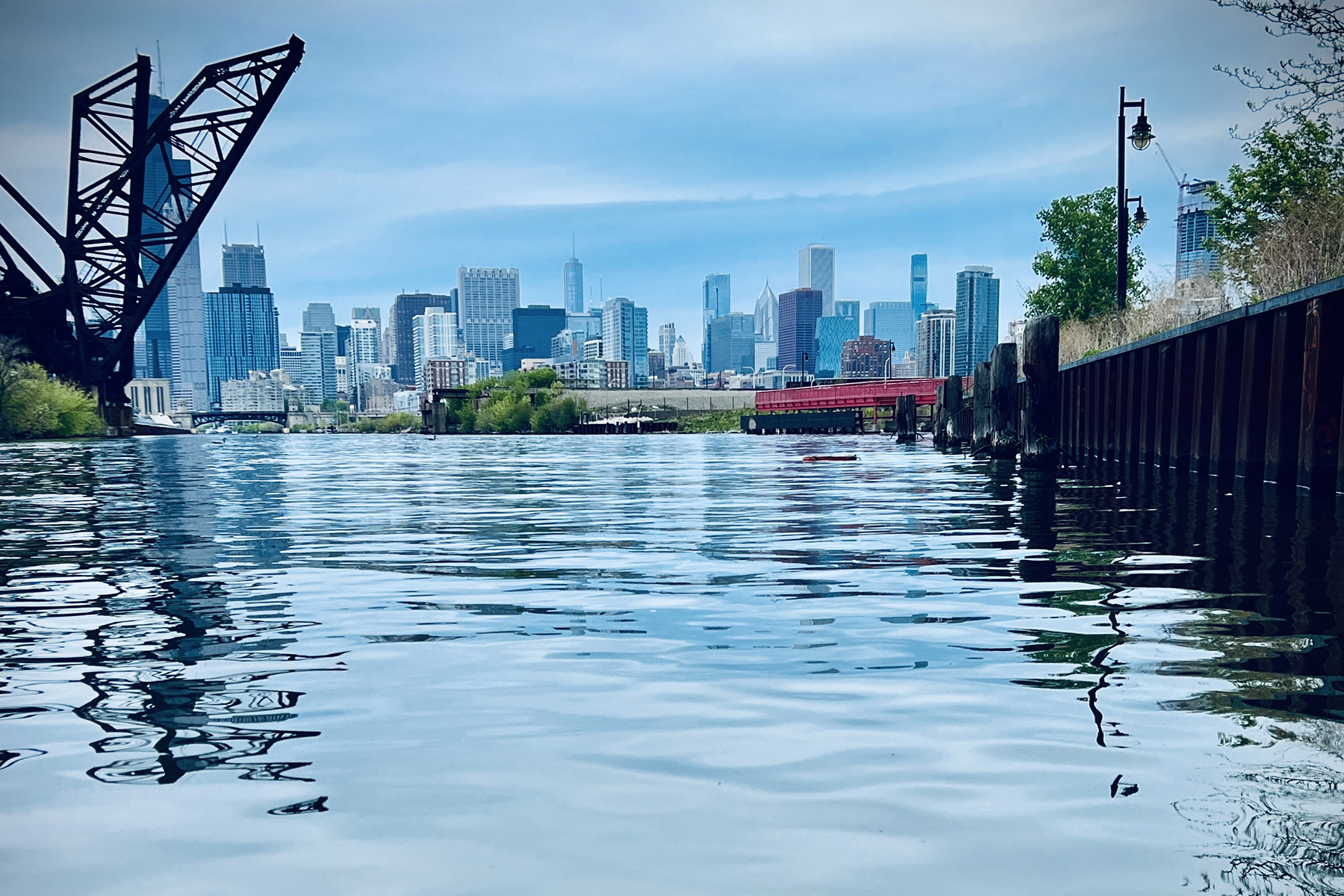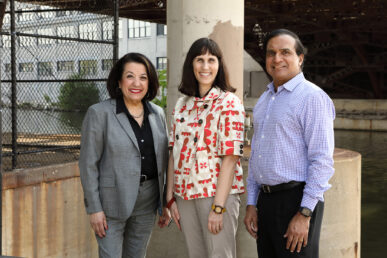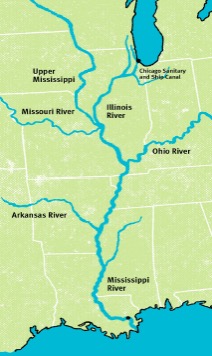A novel plan to recycle Chicago’s wastewater could prevent a future water crisis

The looming crises over fresh water — in places from California to the Middle East — likely seem very distant to those of us living in the Chicago area. After all, we have abundant freshwater at our doorstep in Lake Michigan.
Yet, a little west of the city, there is a water shortage on the horizon. The massive Cambrian-Ordovician aquifer, which supplies groundwater to communities in Will, Kane and DuPage counties, is collapsing. Joliet alone has drawn down its portion of the aquifer by 800 feet. In order to avoid an eventual water shortage, Joliet has contracted with the City of Chicago to supply freshwater from Lake Michigan by 2030.
While this contract provides a fix for Joliet’s near-term problems, it is not broadly sustainable, according to an interdisciplinary group of researchers at the University of Illinois Chicago. Eventually, more communities on the collapsing aquifer will reach out to Chicago for water, and at some point, due to legal limits set by the U.S. Supreme Court, Chicago will need to start saying no.
“Many more communities are going to need water from Chicago, but Illinois has a cap,” explained Rachel Havrelock, founder of UIC’s Freshwater Lab, a humanities-based initiative focused on research, teaching and public awareness about the Great Lakes. “This needs to be thought about now. You don’t want to get to the point where, ‘Oh my gosh, this community has no water.’”
The Freshwater Lab, in partnership with UIC’s Great Cities Institute, has a proposed solution: Supply industrial sites with treated wastewater, while reserving drinking water for the taps that really need it — those running into homes, health care facilities and other places that require potable water. This will help meet the area’s drinking water needs, will divert wastewater out of our rivers and will help support industrial economic growth in northern Illinois.

The researchers lay out their idea in their recently released report, From Waste to Water: A Framework for Sustainable Freshwater Supply in Northeastern Illinois. They propose a novel “dual-pipeline” system: one for conveying treated wastewater to industrial sites and one for conveying drinking water everywhere else. Instead of trying to retrofit existing pipelines, they propose that every new community that applies to build a pipeline to draw water from Lake Michigan build a second one for recycled wastewater.
They’re hoping that federal and state funding can be secured so that the dual-pipeline system is integrated into the Joliet project, which is just beginning construction.
“When better than now to start?” said Teresa Córdova, director of the Great Cities Institute. “There’s no reason we should be using drinking water for industrial use when we have a viable alternative.”
Wastewater doesn’t need to be treated as waste
While access to drinking water isn’t something that most Chicagoans worry about, wastewater often is. In the late 19th century, the flow of the Chicago River was reversed to keep Chicago’s waste out of its drinking water supply. Now, via the Chicago Sanitary and Ship Canal, the city’s wastewater works its way into the Mississippi River and eventually the Gulf of Mexico.
More recently, concerns about wastewater are tied to flooding. Chicago’s Deep Tunnel — one of the world’s largest civil engineering undertakings — was built to capture and hold stormwater until it can be treated to levels that make it safe to dump into the canal, eventually ending up in the Gulf.
“You don’t want to get to the point where, ‘Oh my gosh, this community has no water.’”
— Rachel Havrelock, founder of UIC’s Freshwater Lab
This resource-intensive but rather wasteful process was one of the things that piqued engineering professor Krishna Reddy’s interest in the dual-pipeline concept. After all, the Metropolitan Water Reclamation District of Greater Chicago is spending money to treat wastewater and then just send it on its way as a waste product.
“Freshwater is a precious resource and we’re taking freshwater and putting it into the ocean, making it useless,” said Reddy, a professor of civil, materials and environmental engineering, who is also director of the Geotechnical and Geoenvironmental Engineering Laboratory and the Sustainable Engineering Research Laboratory.
Recycling wastewater is not a novel concept. The process has been used in places around the world that struggle with fresh water supply, sometimes diverting wastewater for industry and sometimes for irrigation. The UIC team focused on a water recycling project in El Segundo, California, as a model for their proposal. That system, built in 1995, provides roughly 40 million gallons of recycled water a day to industrial users in order to free up drinking water in drought-stricken Southern California.
So the concept of recycling water was already on the researchers’ radar when they joined forces on this project. Havrelock’s interest in water — and her decision to found the Freshwater Lab — grew out of research in the Middle East on the impact of water and oil on the politics and cultures there. Reddy, who does environmental remediation research and is interested in engineering projects that promote sustainability and resiliency, knew Havrelock through their mutual interest in water-related issues. Havrelock, an English professor, is also a research fellow at the Great Cities Institute, which is dedicated to finding solutions to urban issues, in part by assembling interdisciplinary teams within the university, so they were a natural partner on this project. Additionally, Córdova, who is a professor of urban planning and policy, has a background in infrastructure research and served on a water utility board.

With $100,000 in seed money from the Metropolitan Water Reclamation District and help from students, the team spent about a year working on their report. Initially, they looked at the feasibility of reusing water within Chicago, but then turned their attention to Joliet, given its pressing water needs and heavy industrial footprint.
They realized that “this is the perfect timing to implement what we’re researching,” said Valeria Kandou, a graduate research assistant in Reddy’s lab who collaborated on the report. She graduated in May with her master’s in civil engineering and, in large part because of her work on this project, is hoping to find an engineering job related to water.
From there, the UIC team developed the idea of a dual pipeline. The Joliet plan calls for building the second pipeline within the same easement as the initial pipeline, meaning no new land would need to be acquired along its 30-mile path. The researchers estimate that building the second pipeline would cost roughly the same amount as the first, $285 million. That second pipeline would then be linked to one of two wastewater reclamation plants, where wastewater is currently collected and treated to levels that make it safe to release into the rivers. The report estimates that the additional cost would be either roughly $78 million or $114 million for that connecting line, depending on which plant it ran to. In both scenarios, the second pipeline would carry enough water to supply Joliet, and eventually the surrounding communities, with its industrial water needs.
Multiple benefits of recycling wastewater in Chicago
While the project has a large price tag, the UIC team believes it will eventually pay for itself by “turning waste into revenue,” as Havrelock describes it. The report recommends that the Metropolitan Water Reclamation District wholesale the recycled water to the Chicago Department of Water Management.
From an economic standpoint, the project also helps support industrial growth in northeastern Illinois by allowing new businesses to access enough water without risk of cutting into drinking water supplies.
And the environmental benefits are clear: help maintain a steady stream of freshwater to the area while diverting wastewater out of the region’s rivers.
The research team acknowledges that despite these many benefits, there might still be a “yuck factor” to using recycled wastewater. They stress that it would be used solely for industrial purposes and not as drinking water.
What’s next?
The UIC team lays out a number of possible funding sources for the project, including money earmarked for Illinois water infrastructure in the federal infrastructure act, as well as money from the Environmental Protection Agency. Securing adequate funding is a crucial next step, particularly if the project is going to be set in motion quickly enough to piggyback off of the work underway on Joliet’s Lake Michigan pipeline.
Additional next steps for the team include building a coalition in the region to make concrete steps toward water recycling and researching ways to partner with industry.
The researchers are looking forward to working together on these and future projects. It is the first time Córdova, Havrelock and Reddy have teamed up, and the interdisciplinary nature of the work made it particularly exciting, Córdova said.
“Part of what Great Cities likes to do is work with cross-campus, interdisciplinary teams to address concrete issues facing cities and provide concrete solutions,” she said. “And this is what we did here.”
